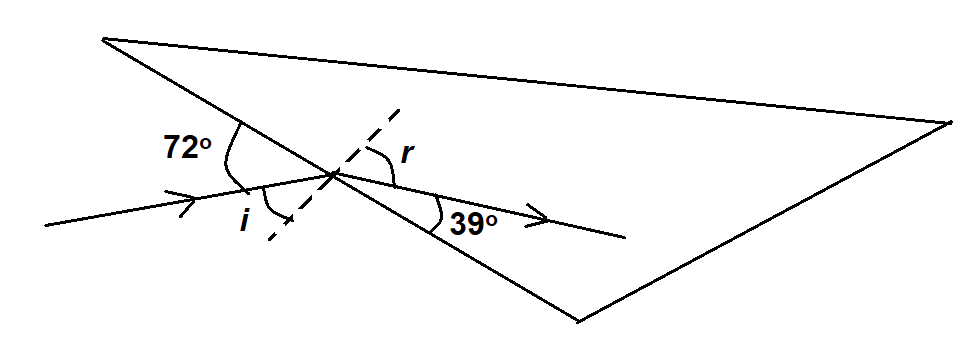Problem 08: A triangular glass prism, with index of refraction ng, is immersed in a strongly refracting, transparent liquid (not water!) with index of refraction nµ. A light ray, traveling through the liquid, strikes the bottom-left surface of the prism and is refracted into the prism, as shown below, with the angles a = 72° and B = 39. State the values of the Angle of Incidence (Aol) and of the Angle of Refraction (AoR) of this refraction process, and whether the glass or the liquid has the greater index of re- fraction. B (A) Aol= 72°, AoR=39° (B) Aol= 18 (C) Aol= 18° (D) Aol= 72° , nc > L - AoR= 51° , nL > nG - AoR=51° ng > n . AoR= 39° (E) Aol= 18 AoR= 39°
Refraction of Light
Refraction is a change in the direction of light rays when they travel from one medium to another. It is the bending of light when it goes through different media.
Angle of Refraction
Light is considered by many scientists to have dual nature, both particle nature and wave nature. First, Particle nature is one in which we consider a stream of packets of energy called photons. Second, Wave nature is considering light as electromagnetic radiation whereas part of it is perceived by humans. Visible spectrum defined by humans lies in a range of 400 to 700 nm wavelengths.
Index of Refraction of Diamond
Diamond, the world’s hardest naturally occurring material and mineral known, is a solid form of the element carbon. The atoms are arranged in a crystal structure called diamond cubic. They exist in a huge variety of colours. Also, they are one of the best conductors of heat and have a very high melting point.


Consider the diagram below for a better understanding;

Trending now
This is a popular solution!
Step by step
Solved in 3 steps with 1 images









